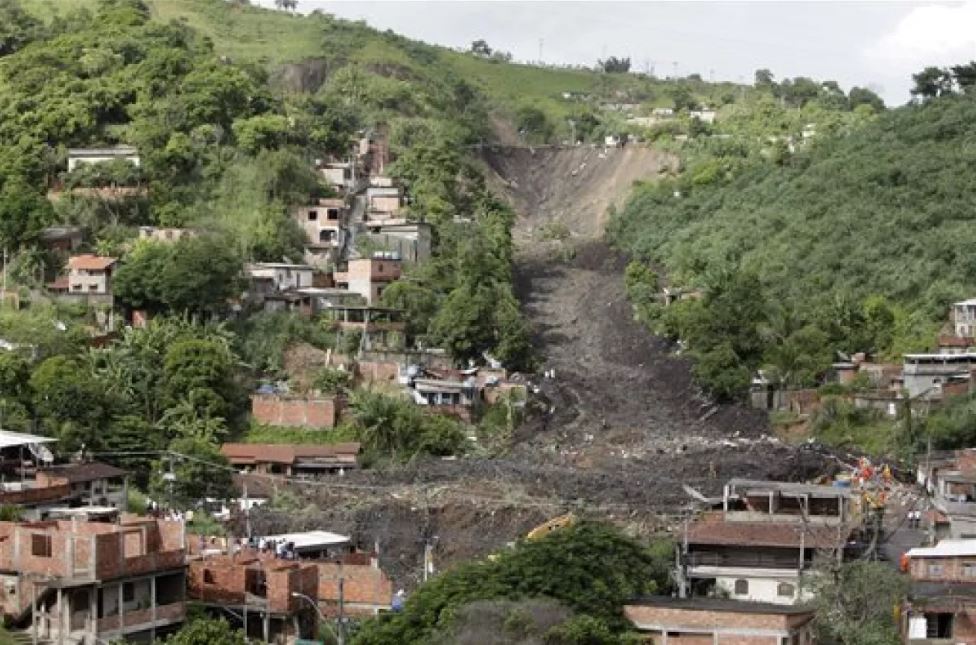23 December 2022
Losses from debris flows in Brazil
Posted by Dave Petley
Losses from debris flows in Brazil
It is well-established that Brazil has a substantial problem with landslides, most notably in the urban areas in the southeast of the country. An Open Access paper just published in Landslides (Cabral et al. 2022) provides a detailed analysis of one type of landslide in the country, debris flows. The paper looks at recorded events in the period between 1920 and 2021 inclusive.
In total, the authors have documented 45 debris flow events over this period in Brazil, causing 5,771 fatalities and US$5,5 billion in economic losses. The most serious events occurred on 11 January 2011 in the vicinity of Rio de Janeiro, when heavy rainfall triggered three separate debris flows that killed a total of 892 people. But very large events have occurred at other times. For example, on 18 March 1967 a debris flow at Caraguatatuba, Sao Paolo killed 436 people, and on 19 February 1988 a debris flow in Rio de Janeiro killed 289 people.
In 2010 a debris flow triggered within a deactivated landfill area in Niterói killed 48 people and left a further 221 missing. There is a contemporary report on this event in the San Diego Union Tribune, which includes this image:-

The aftermath of the 1988 landslide at Niteroi in Brazil. Image by AP Photo/Felipe Dana via the San Diego Tribune.
.
Perhaps the most interesting aspect of this study is the analysis of events and losses through time. (Cabral et al. 2022) report the following:
There has not been a significant increase [in the number of events] in recent decades, with the frequency averaging at about seven per decade since the 1960s. Prior to 1960s, the documentation of debris-flow events is scarcer, which can be associated to lower levels of urbanization and, consequently, a lower societal impact. The number of fatalities along the years has also been steady since the 1960s, with the decades of 1960s and 2010s standing out as those with the highest number of fatalities, particularly in the years of 1967 and 2011. These two years are characterized by the high-magnitude debris-flow events in Caraguatatuba and Serra das Araras (1967), and Teresópolis, Petrópolis and Nova Friburgo (2011).
On the other hand, economic losses have accelerated dramatically, probably related primarily to increased urbanisation and economic activity, meaning that more assets with a higher value were in the path of debris flows.
Cabral et al. (2022) conclude the abstract with the following, which is hard to deny:
…these results highlight the urgent need for investments in disaster prevention and preparedness programs.
.
Reference
Cabral, V., Reis, F., Veloso, V. et al. 2022. The consequences of debris flows in Brazil: a historical analysis based on recorded events in the last 100 years. Landslides. https://doi.org/10.1007/s10346-022-01984-7


 Dave Petley is the Vice-Chancellor of the University of Hull in the United Kingdom. His blog provides commentary and analysis of landslide events occurring worldwide, including the landslides themselves, latest research, and conferences and meetings.
Dave Petley is the Vice-Chancellor of the University of Hull in the United Kingdom. His blog provides commentary and analysis of landslide events occurring worldwide, including the landslides themselves, latest research, and conferences and meetings.
Thanks for sharing our work, Prof. Petley! I am a great admirer of all your efforts in the prevention and mitigation of landslide-related disasters worldwide. All the best,
Victor